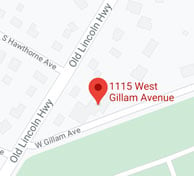Dealing with water leaks in your home can be incredibly frustrating and time-consuming, not to mention the potential for costly damage and repairs. But what happens when it's your furnace that's leaking water? Panic can easily set in, especially as the temperatures continue to drop. In this blog, we'll cover the causes of water leaks, signs of a leaky furnace, how to prevent water leaks, and what to do in the event of a water leak.
Understanding the Causes of Water Leaks in Your Furnace
Clogged condensate line
One common cause of a furnace leak is a clogged condensate drain line. Over time, dust, dirt, and debris can accumulate in the drain line, causing a blockage. When this happens, water can't properly drain away from the furnace and ends up leaking.
*Note that high-efficiency furnaces do not condense so there are no condensate lines to clog.
High humidity levels
Additionally, high humidity levels in the home can contribute to water leaks. When warm air from the furnace comes into contact with cool surfaces, condensation can form and lead to water leakage.
Malfunctioning condensate pump
Lastly, a malfunctioning condensate pump can also cause water leaks. The condensate pump is responsible for pumping water away from the furnace. If it stops working properly, water can accumulate and leak from the unit.
Signs and Symptoms of a Leaking Furnace
Water puddle
One obvious sign is the presence of water pooling around the furnace. You may also notice water stains or discoloration on the walls or floor near the furnace.
Increased humidity
Another common symptom is an increase in humidity levels in the home. If you notice excessive moisture or a musty odor, it could be a sign of a leaking furnace.
Decreased efficiency
A decrease in heating performance is a third symptom of a leaky furnace. If you notice that your home is not getting as warm as it should, it may be due to a water leak affecting the furnace's efficiency.
Mold growth
Additionally, a leaking furnace can lead to mold growth. If you notice any signs of mold, such as a musty smell or visible mold patches, it's important to address the water leak as soon as possible.
Steps to Take When Your Furnace is Leaking Water
If you discover that your furnace is leaking water, there are several steps you can take to address the issue.
-
First, turn off the furnace and cut off the power supply to prevent any further damage.
-
Next, locate the source of the leak. Check the condensate drain line for any blockages and clear them if necessary. If the drain line is clear, inspect the heat exchanger for cracks or holes. If you find any damage, it's best to call a professional for repairs.*High-efficiency furnaces do not condense so there are no condensate lines to clog.
-
Once you've identified and addressed the source of the water leak, clean up any water that has accumulated around the furnace. Use towels or a wet/dry vacuum to soak up the water and dry the area thoroughly.
-
After cleaning up, it's important to monitor the furnace for any recurring leaks. If the problem persists, it's recommended to contact your local expert for help.
Preventative Measures to Avoid Future Water Leaks
To prevent future water leaks in your furnace, there are a few preventive measures you can take.
Keep an eye on the condensate line
Regularly inspect and clean the condensate drain line to ensure it remains clear of debris. You can use a mixture of water and bleach to flush out any buildup.
Maintain proper humidity levels
Maintaining proper humidity levels in your home can also help prevent condensation and subsequent water leaks. Consider using a dehumidifier if you live in a humid climate or if your home has a tendency to retain moisture.
Don't skip annual maintenance
Additionally, scheduling regular maintenance for your furnace is crucial. A professional technician can check for any potential issues and address them before they lead to water leaks.

Make necessary repairs
Finally, make sure to replace the condensate pump if it starts to malfunction. Regularly inspect the pump and replace it if you notice any signs of damage or if it's not functioning properly.
Conclusion
Remember, attempting to repair complex furnace issues without the proper knowledge and expertise can be dangerous and may cause further damage. It's always best to leave these repairs to the professionals.
If you live in the Delaware Valley/Greater Philadelphia area and would like to find comfort within your home, visit our website or give us a call at 215 - 245 - 3200 to learn more.





